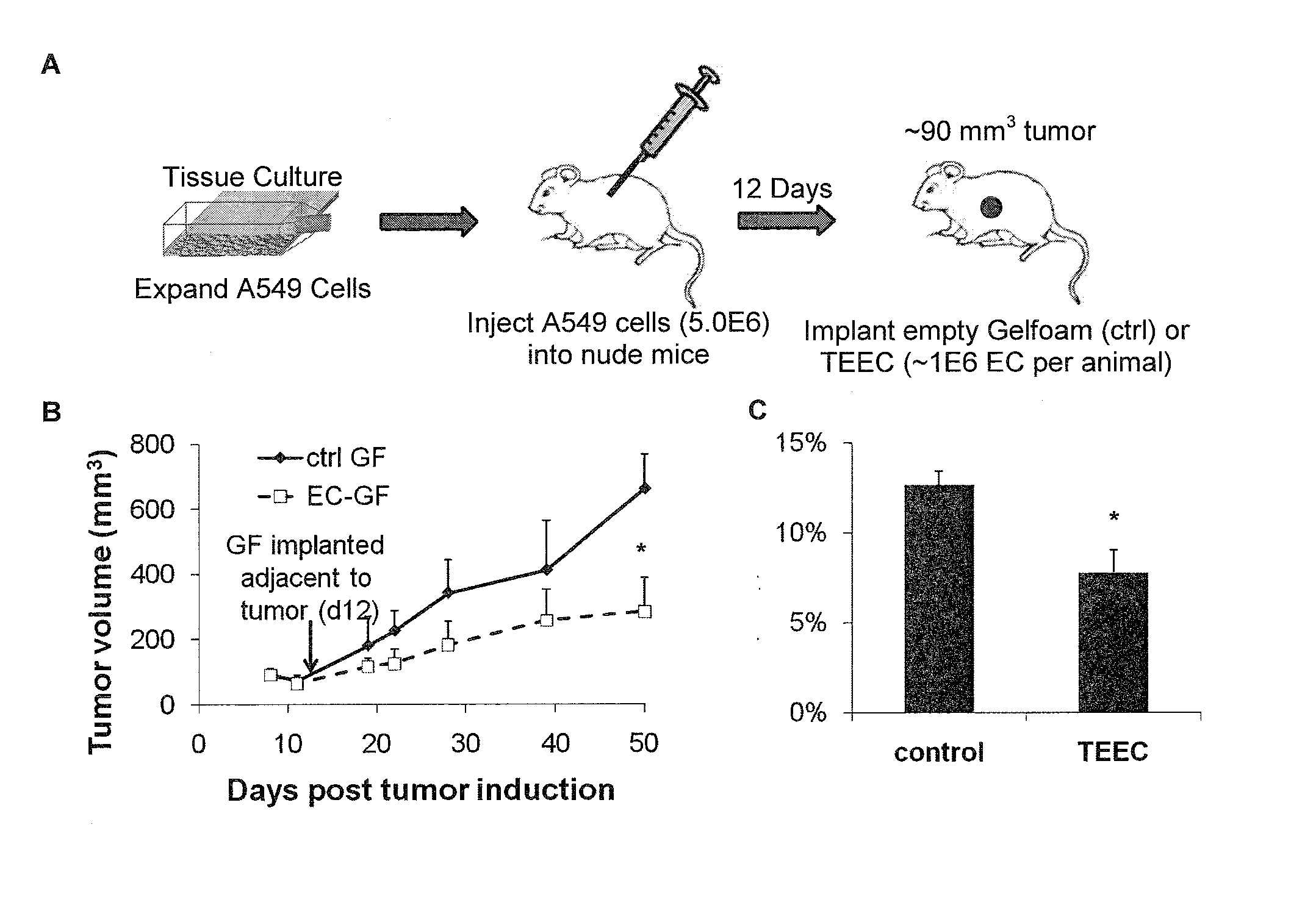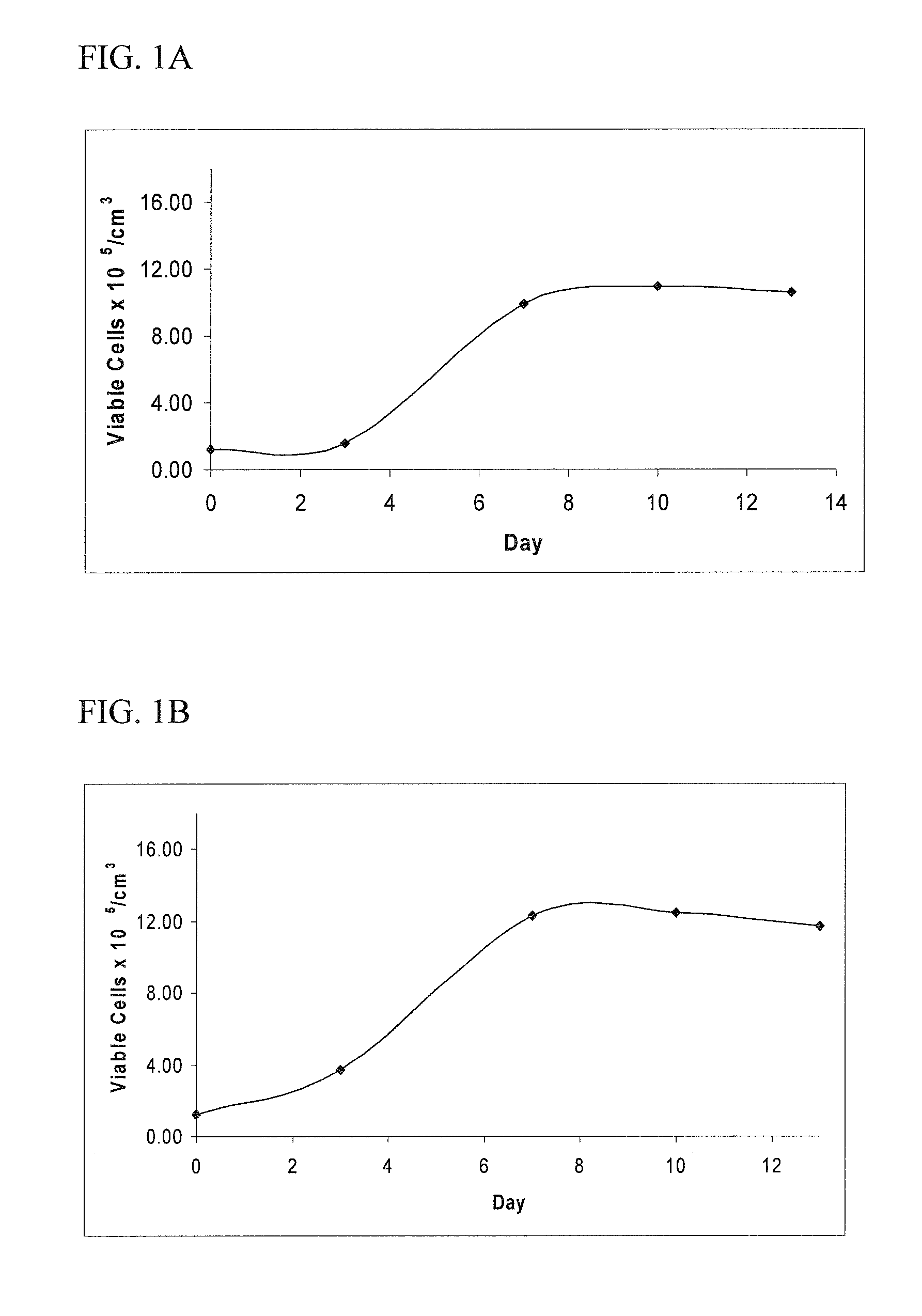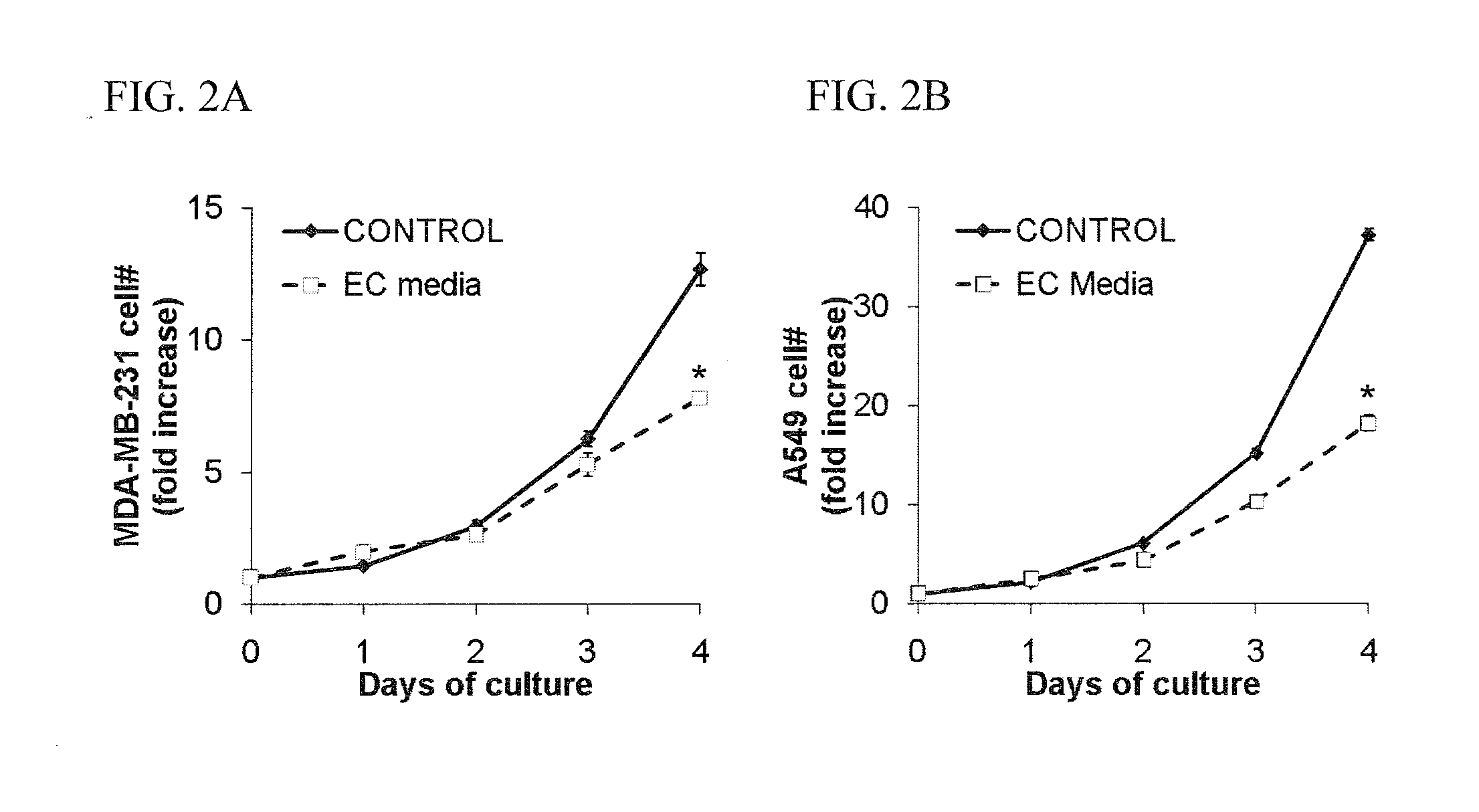Methods and Compositions for Managing Cancer Cell Growth
a cancer cell and growth technology, applied in the field of cancer biology, can solve the problems of serious side effects, substantial damage to the body, and cancer therapy itself is potentially devastating, and achieve the effects of reducing the risk of neoplasia or dysplasia, and reducing the risk of neoplastic metastasis or paraneoplasia
- Summary
- Abstract
- Description
- Claims
- Application Information
AI Technical Summary
Benefits of technology
Problems solved by technology
Method used
Image
Examples
example 1
Endothelial Cell Conditioned Media Modulates Cancer Cell Proliferation
[0173]The effects of EC-conditioned media on cancer cell proliferation were examined during exponential growth in culture. Primary human umbilical vein endothelial cells (HUVECs, Invitrogen) were cultured on gelatin-coated TCPS plates and used between passages 2-6. The culture medium (“EC growth medium”) for HUVECs was EGM2 (Lonza) with an additional 3% FBS. Cells were passaged by detachment with trypsin and split 1 to about 5. Endothelial cell conditioned media was generated by 48 hours of culture in MDCB (Invitrogen) supplemented with 10% FBS, 100 U / mL penicillin, and 100 μg / mL streptomycin. Cells and debris were removed by centrifugation (5 minutes, 500 g) and endothelial cell conditioned media were aliquotted and stored at −80° C. A549 (large cell lung carcinoma cells) and MDA-MB-231 (breast carcinoma cells) were purchased from ATCC. Cancer cells were cultured on TCPS dishes in a 37° C., humidified, 5% CO2 env...
example 2
Engrafted Endothelial Cell Conditioned Media Modulates Cancer Cell Proliferation
[0184]To confirm these modulatory effects, cancer cell proliferation and invasiveness were further assessed in vitro in response to media conditioned with engrafted endothelial cells and media conditioned with “late-outgrowth” endothelial progenitor cells (EPCs) to demonstrate that engrafted endothelial cells can inhibit cancer cell proliferation and virulence. Briefly, cancer cell proliferation (tumor growth) was analyzed via MTS assay, and cancer cell invasiveness (metastasis) was analyzed via chemoinvasion assay. Two well-differentiated cancer lines, SK-LMS-1 leiomyosarcoma and NCI-H520 squamous lung carcinoma were used. Endothelial cells in various states (e.g., subconfluent, post confluent) and from various vascular beds were used.
[0185]SK-LMS-1 and NCI-H520 cancer cells were cultured as described above. Functional assays as described above were used to analyze the cancer cell phenotype before and a...
example 3
Plated and Engrafted Endothelial Cells Regulate Cancer Cell Invasiveness
[0190]Cancer cell invasiveness is a key trait in determining the aggressiveness and metastatic potential of tumors. Thus, this property was examined using a chemoinvasion / chemomigration assay, to analyze how cancer cells chemotax through cell culture insert pores which had been either coated with extracellular matrix proteins (to emulate “invasion”) or uncoated (to emulate “migration”). FIG. 8, shows a schematic diagram of a chemoinvasion / chemomigration assay. Proliferation was measured by harvesting adherent cells and counting the cell suspension concentration with a Coulter counter (Beckman Coulter, Fullerton, Calif.). Briefly, commercially available chemoinvasion chamber kits (BioCoat, Becton Dickinson) were used according to the manufacturer's instructions. Invaded or migrated cells adherent to the bottom of the assay's inserts are fixed, stained with DAPI and imaged with an epifluorescence microscope. The i...
PUM
| Property | Measurement | Unit |
|---|---|---|
| Fraction | aaaaa | aaaaa |
| Dimensionless property | aaaaa | aaaaa |
| Concentration | aaaaa | aaaaa |
Abstract
Description
Claims
Application Information
 Login to View More
Login to View More - R&D
- Intellectual Property
- Life Sciences
- Materials
- Tech Scout
- Unparalleled Data Quality
- Higher Quality Content
- 60% Fewer Hallucinations
Browse by: Latest US Patents, China's latest patents, Technical Efficacy Thesaurus, Application Domain, Technology Topic, Popular Technical Reports.
© 2025 PatSnap. All rights reserved.Legal|Privacy policy|Modern Slavery Act Transparency Statement|Sitemap|About US| Contact US: help@patsnap.com



